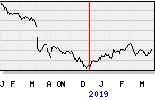
Outcome reflects strong capital position and resilient balance sheet
Under adverse stress scenario and sovereign haircuts ING's Tier 1 ratio would decline to 8.8% in 2011
ING would remain well above hurdle rate of 6% Tier 1 ratio with surplus Tier 1 capital of EUR 11.9 billion in 2011
Strong pre-impairment income largely absorbs stress impact
ING participated in the stress tests conducted by the Committee of European Banking Supervisors (CEBS), which included a baseline scenario, adverse scenario and an additional sovereign shock for 2010 and 2011. ING Bank's pre-impairment income remains resilient, which helps offset the impact of higher loan loss provisions, additional impairments across the securities portfolios and increased risk-weighted assets.
Under the adverse scenario, ING's Tier 1 ratio would decline from 10.2% at the end of 2009 to 9.1% at the end of 2011. An additional sovereign risk scenario would have a further impact of -0.3% on the estimated Tier 1 ratio, bringing it down to 8.8% at the end of 2011. The threshold Tier 1 ratio for this exercise was determined to be 6%, and ING would remain comfortably above this level with a Tier 1 capital buffer of EUR 11.9 billion.
"ING's focus on the strengthening of its Bank's balance sheet since the spring of 2009 has given us sufficient resilience to endure a stressful economic scenario", said Jan Hommen, CEO of ING Group. "Under the stress scenarios as presented by CEBS, ING Bank's Tier 1 ratio would in 2011 come out at 8.8%, well above the hurdle rate. This satisfactory result reaffirms our confidence in the future and further supports the success of our businesses in the interests of our customers and all other stakeholders. ING has always strongly supported balanced stress tests and we hope this European stress test initiative will contribute to improving confidence in the financial industry."
Under the Back to Basics Strategy started in the spring of 2009, ING de-risked and deleveraged its balance sheet. Additionally, a significant turnaround in the company's results and last year's rights issue have strongly supported the strengthening of the capital base. Both resulted in a lower risk profile and a capital position that is well able to absorb the effects of the stress scenarios as presented by CEBS.
CEBS stress test information
ING was subject to the 2010 EU-wide stress testing exercise coordinated by the Committee of European Banking Supervisors (CEBS), in cooperation with the European Central Bank, and De Nederlandsche Bank. ING acknowledges the outcomes of the EU-wide stress tests.
This stress test complements the risk management procedures and regular stress testing programmes set up in ING under the Pillar 2 framework of the Basel II and CRD requirements.
The exercise was conducted using the scenarios, methodology and key assumptions provided by CEBS (see the aggregate report published on the CEBS website). As a result of the assumed shock under the adverse scenario, the estimated consolidated Tier 1 ratio would change to 9.1% in 2011 compared to 10.2% at the end of 2009. An additional sovereign risk scenario would have a further impact of -0.3 percentage point on the estimated Tier 1 ratio, bringing it to 8.8% at the end of 2011, compared with the regulatory minimum of 4%.
Under the results of the stress test the Tier 1 capital would show a buffer of EUR 11.9 billion on top of the CEBS threshold Tier 1 ratio of 6%, which ING agreed to exclusively apply for the purposes of this exercise. This threshold should by no means be interpreted as a regulatory minimum (the regulatory minimum for the Tier 1 ratio is set to 4%), nor as a capital target reflecting the risk profile of the institution determined as a result of the supervisory review process in Pillar 2 of the CRD. ING has held rigorous discussions of the results of the stress test with De Nederlandsche Bank.
Given that the stress test was carried out under a number of key common simplifying assumptions (e.g. constant balance sheet) the information on benchmark scenarios is provided only for comparison purposes and should in no way be construed as a forecast.
In the interpretation of the outcome of the exercise, it is imperative to differentiate between the results obtained under the different scenarios developed for the purposes of the EU-wide exercise. The results of the adverse scenario should not be considered as representative of the current situation or possible present capital needs. A stress testing exercise does not provide forecasts of expected outcomes since the adverse scenarios are designed as "what-if" scenarios including plausible but extreme assumptions, which are therefore not very likely to materialise. Different stresses may produce different outcomes depending on the circumstances of each institution.
The objective of the 2010 EU-wide stress test exercise conducted under the mandate from the EU Council of Ministers of Finance (ECOFIN) and coordinated by CEBS in cooperation with the ECB, national supervisory authorities and the EU Commission, is to assess the overall resilience of the EU banking sector and the banks' ability to absorb further possible shocks on credit and market risks, including sovereign risks.
The exercise has been conducted on a bank-by-bank basis for a sample of 91 EU banks from 20 EU Member States, covering at least 50% of the banking sector, in terms of total consolidated assets, in each of the 27 EU Member States, using commonly agreed macro-economic scenarios (benchmark and adverse) for 2010 and 2011, developed in close cooperation with the ECB and the European Commission.
More information on the scenarios, methodology, aggregate and detailed individual results is available from CEBS. Information can also be obtained from the website of De Nederlandsche Bank.
